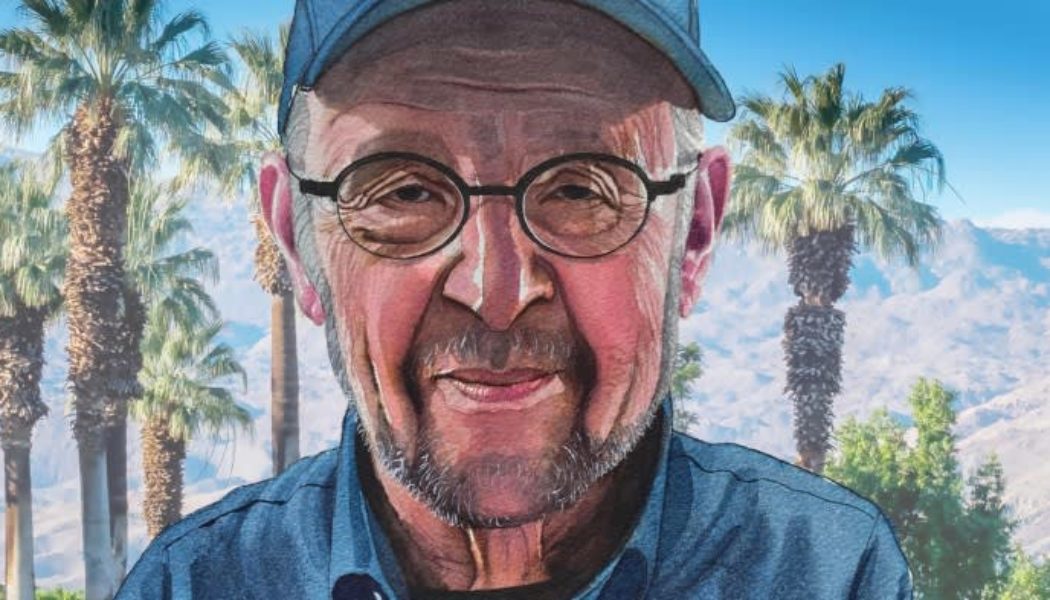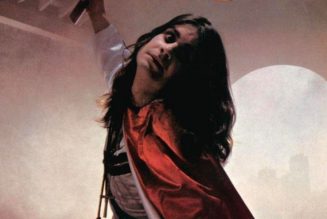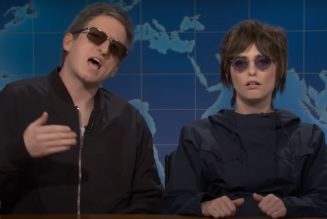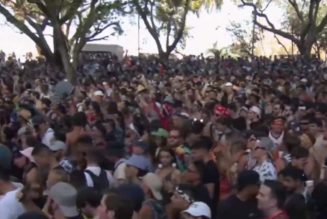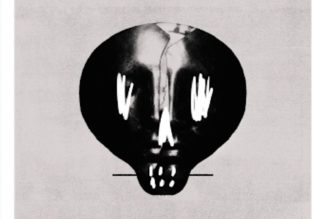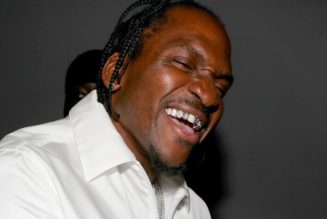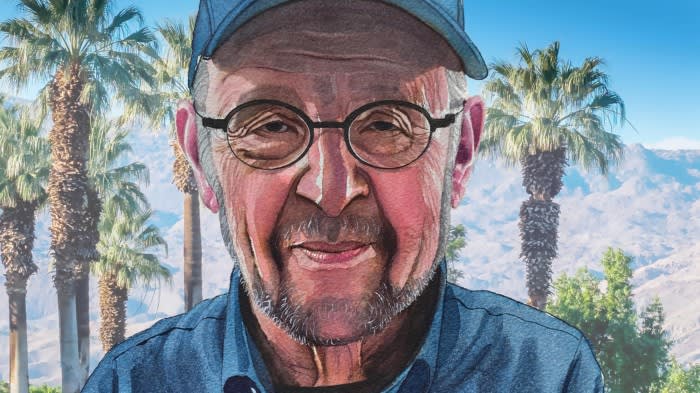
Like all drummers, Steve Reich sometimes feels the urge to tap out a beat on a table-top. But Reich is also a composer — many believe him to be the greatest composer alive — with a vast mental library of songs that he may, at some point during a conversation, suddenly start to sing, hum or vocalise in some way.
During our lunch, he hums a line or two of “Frère Jacques”. He sings a lyric from a pop song that his mother wrote in the 1950s. He chants a bit of a 12th-century choral work. At one point he tries to imitate the sound of a French horn imitating the sound of an elephant. At another, he re-creates the bass line from Junior Walker’s soul classic “Shotgun”. He sings because it is the most direct way to explain a musical concept — but also simply because the music is such a deep part of him.
“You just listen to the music, and you love it,” he says. “It goes somewhere inside of you, and it bubbles up unbidden. It has influenced you on an organic level.”
Reich, 87, has been influencing the course of modern music for nearly 60 years. Along with Philip Glass and Terry Riley, he was part of a loose group of so-called minimalist composers who in the late 1960s and ’70s swept away the complex modernist style that had dominated western classical music for much of the 20th century.
He has also inspired musicians beyond the realm of classical music. Brian Eno and David Bowie were early fans, and more recently his influence can be found in the music of Radiohead, Björk and Aphex Twin. His work is frequently sampled by DJs and hip-hop artists.
We meet in Palm Desert, about two and a half hours from Los Angeles, where he and his wife, visual artist Beryl Korot, have decamped to escape the New York winter.
Reich has chosen Wilma & Frieda’s, a breakfast place in an upmarket outdoor mall along the main highway in Palm Desert. The restaurant is on the second floor of the shopping centre, and our outside table provides a lovely view of the mountains that form the boundary of the Coachella Valley.
With its Tiffany and Brooks Brothers stores, the mall is not the kind of place I would have ever expected to meet Reich, who was once a loft-dwelling figure in New York’s downtown art scene. There is brunch-friendly soft rock music being piped in, and on the previous evening the mall hosted a live performance by an Eagles cover band. But Reich, dressed in dark tones and wearing his signature dark baseball cap, has come for the waffles, not the music.
The waiter arrives to take our order. Reich asks for a waffle with syrup and butter, orange juice and a pot of black tea. I scan the egg dishes, which are listed as Eeny, Meany, Miney and Mo. I order a Meany, hold the sausage. “No meat? Then what you want is an Eeny,” the waiter tells me. I ask for coffee to go along with my Eeny.
We are meeting as Reich’s latest work, Jacob’s Ladder, a piece for ensemble and vocals set to text from Genesis, is preparing to have its European premiere at the Radio France festival in Paris. Manchester’s Hallé Orchestra is also presenting a Reich festival this week featuring 10 of his major works, including The Desert Music and Music for Pieces of Wood.
These events are a reminder that Reich now sits firmly atop the classical establishment. But there was a time when this wasn’t the case. When his early work Four Organs — a piece for amplified organs and maracas, centred on a single chord — was presented alongside works by Bach and Bartók at Carnegie Hall in 1973, the crowd almost rioted; one woman pounded her shoe on the stage to try to stop the concert.
Reich is disappointed that he cannot attend the tributes in Manchester and Paris. “I’m 87 and I’m able to work, but I’m not like I was at 67 or 77,” he says. “I’d love to go, but I want to be able to write [music] and I only have so much time and only so much energy to do it.”
Although born and mostly raised in New York, Reich seems comfortable in California. After his parents divorced when he was one, he began taking cross-country train journeys with his nanny between his father’s home in New York and Los Angeles, where his mother June Carroll was a songwriter. These journeys continued for about five years, and would become an inspiration for his 1988 multimedia piece Different Trains.
Menu
Wilma & Frieda’s Café
73575 El Paseo #2310, Palm Desert, California
Eeny $16
Belgian waffle $13
Coffee $3.95
Tea $4
Total (incl tax and service) $47.81
His mother co-wrote songs for Broadway, including “Love Is a Simple Thing” and “Monotonous,” which was performed by Eartha Kitt. Did his mother have any influence on him as a musician? Only indirectly, since he did not grow up with her. “My [maternal] grandpa Mort, who ran a jewellery store, was a great vaudeville pianist,” he says. “So whatever genetic help I had came from my mother’s side.”
Reich took piano lessons, but much of his musical education came from the Your Hit Parade radio show — at least until he turned 14, when he discovered three pieces of music that would change his life. The first was Igor Stravinsky’s The Rite of Spring — another tradition-busting work that provoked a riot at its premiere in 1913. “This is the greatest thing I’ve ever heard,” he recalls thinking. It would be the start of a life-long obsession with the Russian composer.
Bach’s Brandenburg concertos were the next to blow his young mind. Then a friend turned him on to the jazz saxophonist Charlie Parker, and he knew right away that he wanted to start a be-bop band. “I had a friend who was a better pianist than I was, so I said, ‘You play the piano and I’m going to be the drummer’.” Reich has been playing drums ever since.
After graduating with a degree in philosophy from Cornell, he studied music composition with Hall Overton — a composer who worked with Thelonious Monk and other jazz greats. Juilliard and Mills College followed, and he soon found himself in San Francisco at the dawn of the 1960s. “A lot of things were happening, all of which were very formative,” he says of this time.
He worked with the San Francisco Mime Troupe, which was doing guerrilla theatre in the streets. He became obsessed with John Coltrane, whose group he saw roughly 50 times, and he discovered African and Indonesian music. And like a number of other artists at the time, Reich began experimenting with audio tape loops. With reel-to-reel machines becoming more common, artists from William Burroughs to The Beatles began manipulating the magnetic tape by cutting and pasting, playing it backwards, or shifting speeds.
“It was in the air — people were working with tape on the pop side and from the classical side,” Reich recalls. “Early electronic music was tape music.”
Reich had a couple of Wollensak tape recorders, and in 1964 a friend suggested that he go to San Francisco’s Union Square to check out a black Pentecostal street preacher named Brother Walter who was delivering a sermon about Noah and the flood. As Reich began recording the sermon, the tape caught the flapping sound of a pigeon taking flight that added an otherworldly effect to the recording. “You could say [the pigeon was] serendipitous, you could say it was a divine gift,” Reich tells me. “But whatever it was, it made the piece for sure.”
Clocking in at about 18 minutes, It’s Gonna Rain became a landmark in minimalist music, in part thanks to a technique called “phase-shifting” that involved the two tape recordings falling out of sync with one another, then re-synching. Coming as US-Soviet tensions were at a peak, the piece, with its intense chanting effects, tapped into a deep sense of cultural anxiety and foreboding.
The following year, Reich recorded another work called Come Out, a 13-minute tape loop composition featuring a recording of a young black man from Harlem who had been arrested and beaten by police. For most of the piece the phrase “come out to show them” is repeated, and Reich uses the phasing technique that distorts the words as it plays.
The two taped pieces reflected the biggest concerns in the US in the early 1960s: the threat of nuclear war — made all too real during the 1962 Cuban missile crisis — and racial injustice. “I’m not a political composer, but I’m a human being, and things get to me,” says Reich. “When I’m recording Brother Walter in Union Square, and he’s really laying it down about Noah and the end of the world, it’s very difficult not to connect the dots.”
Our food arrives. Reich seems happy with his waffle, and applies generous servings of butter and syrup. My plate is not so “eeny” after all, with a big pile of fluffy scrambled eggs and crispy hash browns. The showstopper, though, is a giant biscuit, which has come with a delicious four-berry jam.
We take a few bites, then return to San Francisco in the 1960s. He was friends with Phil Lesh, who would go on to join the Grateful Dead, and they collaborated on some pieces. “He and I worked together for a while, but when he got involved with the Grateful Dead, I just . . . that wasn’t for me,” Reich says.
Although he liked some popular music at the time — The Beatles, The Byrds, a bit of Bob Dylan — he admits it did not mean much to him. “Rock was a fact, and some of it was nice, but it was just musically irrelevant,” he says.
Reich’s San Francisco recordings were making a mark, and many viewed his music as a welcome turning point. But by the mid-1960s, he was plotting a return to New York, where the modernist giants still ruled.
He recalls his first concert back in New York, in 1967, at the Park Place Gallery run by Paula Cooper, who would go on to start the first art gallery in New York’s Soho the following year. The artist Robert Rauschenberg was there, as were members of the Judson Dance Theater. “And people said, oh, you’re doing something different,” he says. “It was a period of time when a new aesthetic was being born in New York, for sure.”
Here Reich fell in with musicians, dancers, sculptors and filmmakers. Sculptor Richard Serra was a neighbour of Reich’s at the time in Lower Manhattan, as was experimental filmmaker Michael Snow. For a brief period, Reich helped out with fellow minimalist Philip Glass’s removal company, Chelsea Light Moving. He recalls paying $65 a month in rent for a loft on Duane Street. “But I had a hard time paying that,” he says.
Some of Reich’s most significant works of minimalism (although he has never loved the term) were produced in New York in the early 1970s. With Four Organs, he hoped to re-create the “phasing” effect of his tape pieces, but with real instruments. Other significant works of the period include Drumming, which was inspired by a trip to Ghana, and Clapping Music, a piece made by two people clapping their hands.
Yet he was beginning to change course, and in 1976 he released what many consider to be his masterpiece, Music for 18 Musicians. As with some of his earlier work, the hour-long piece has a steady, insistent pulse. But its instrumentation was far more complex than anything he had done before — violin, cello, two clarinets, four pianos, three marimbas, four women’s voices, two xylophones and metallophone.
Reich had rehearsed the piece with the musicians once or twice a week for a year. “I could tell from the occasional people who would come down [to watch] that this was a really good piece,” he says. Even so, he was surprised by how much audiences loved it.
Music for 18 Musicians changed his life. Not only was it a new direction for his music, but it was also “enormously successful,” Reich says. The group did two international tours, where the reception was extremely positive. But when the tours were done, he was emotionally and physically spent. It took a while for him to begin writing again.
At around the same time, he was becoming more interested in his Jewish heritage. He had been raised as a secular Jew — he says he had a “lip-sync bar mitzvah” — and he decided to begin studying Hebrew. In 1981, he released Tehillim, which is the original Hebrew word for psalms, in his first work to deal with his Jewish heritage.
Reich picked up on those themes again in 1988 with Different Trains, an idea that sprang from his cross-country trips as a child in the late 1930s. “As a Jew, if I had been in Europe during this period, I would have had to ride very different trains,” he has said. He employed digital samplers, which allowed him to play recorded speech of people who lived through the era, Holocaust survivors among them. It won a Grammy award.
He says he has always been “religiously inclined”, but religion has become a bigger part of his life as he grew older. His most recent work Jacob’s Ladder is based on a passage from Genesis in which Jacob dreams of a ladder that reaches Heaven. Reich was drawn to the ladder as a “provocative image” of an everyday object that radiates out into infinity. But he struggled with the composition, and he got stuck thinking that the best way to convey a ladder musically was by using ascending and descending scales. “I trapped myself for a couple of months writing scales. But it was boring.” Finally he ditched the scale idea. “I said, just write what you feel. I’m going to let myself just go,” he recalls. “That liberated me.”
Now that Jacob’s Ladder is being performed, he is setting his sights on another piece based on scripture, as yet untitled, this time from Proverbs: “In all your ways know Him”. Once again, he finds himself thinking about Stravinsky — and his own advancing age. “Stravinsky, who I obviously fixated on, was basically concerned in all his later work with religious work,” he says. “I feel that way too.”
Yet despite fretting about getting started on the work, he is buzzing with ideas for the new piece. He wants to do something melodic, and he starts riffing on what makes a good melody. Once again, Reich begins to sing to illustrate a musical idea: “Da-da-da-daa, da-da-da-daa.” Beethoven’s Symphony No 5.
The plates have been cleared and we are among the very last of the brunch crowd. As we begin to wrap up, we talk about the trajectory of his long career, beginning with solo tape experiments and evolving into multimedia work with ensembles that are performed in the great concert halls. I ask if there has been a common motivation that has driven him.
“What do I want? I want life, I want the music to be played, I want the music to be listened to. I want to know people have felt things,” he says. “I’m very grateful that my music has been listened to and appreciated. It’s a great source of happiness.”
Christopher Grimes is the FT’s Los Angeles bureau chief
Find out about our latest stories first — follow @FTWeekend on Instagram and X, and subscribe to our podcast Life & Art wherever you listen
